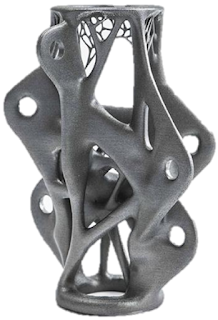FEM: Six steps to achieve a proper mesh to the static structural analysis
Six steps to achieve a proper mesh to the static structural analysis
Have ever you asked: How to achieve a proper mesh to the static structural analysis?
There are a couple of strategies to do it. However, I will show one that I always successfully have used.
1. Check the
possibility to apply symmetry.
2. Perform a CAD
pre-treatment, removing gaps, redundant or excessive edges, unnecessary
details, surface smoothing, and everything out of analysis interest region
(Caution: Do never remove details, like chamfer in regions wherein there are
maximum stress – see step 6 Convergence).
3. Run the first
analysis with coarse mesh to identify regions of maximum stress. After this
identification, perform local refinement on these regions (if the geometry is
simple, go to step 5).
4. Evaluate
elements quality, in particular on regions of maximum stress. All them must
have good quality, even the big ones. In general, the acceptable average
quality should be above grade 0,8 and the standard derivation lower than
0,09.
To understand more about elements and mesh quality, I suggest the reading of these three articles:
MESH QUALITY AND BODY SIMPLIFICATION (PART 1) - TYPES OF ELEMENTS
MESH QUALITY AND BODY SIMPLIFICATION (PART 3) - ELEMENTS QUALITY
MESH QUALITY AND BODY SIMPLIFICATION (PART 4) - MESH QUALITY
To understand more about elements and mesh quality, I suggest the reading of these three articles:
MESH QUALITY AND BODY SIMPLIFICATION (PART 1) - TYPES OF ELEMENTS
MESH QUALITY AND BODY SIMPLIFICATION (PART 3) - ELEMENTS QUALITY
MESH QUALITY AND BODY SIMPLIFICATION (PART 4) - MESH QUALITY
5. Choose which
solver to use: Direct or Iterative:
• Direct: Indicated
to linear structural analysis due to better accuracy. Can be applied to non-linearity, however, requires more processing power.
• Iterative:
Indicated to non-linear structural analysis. To linearity, there is the risk to
do not the convergence happens.
6. Perform the
convergence test. There are software that do it automatically, do it directly
if you have a simple geometry. If the geometry is complex, it is better to do
local increment manually, after then, perform the automatic convergence. This
care will avoid that the software creates too many small elements in regions
without necessity.






Comments
Post a Comment